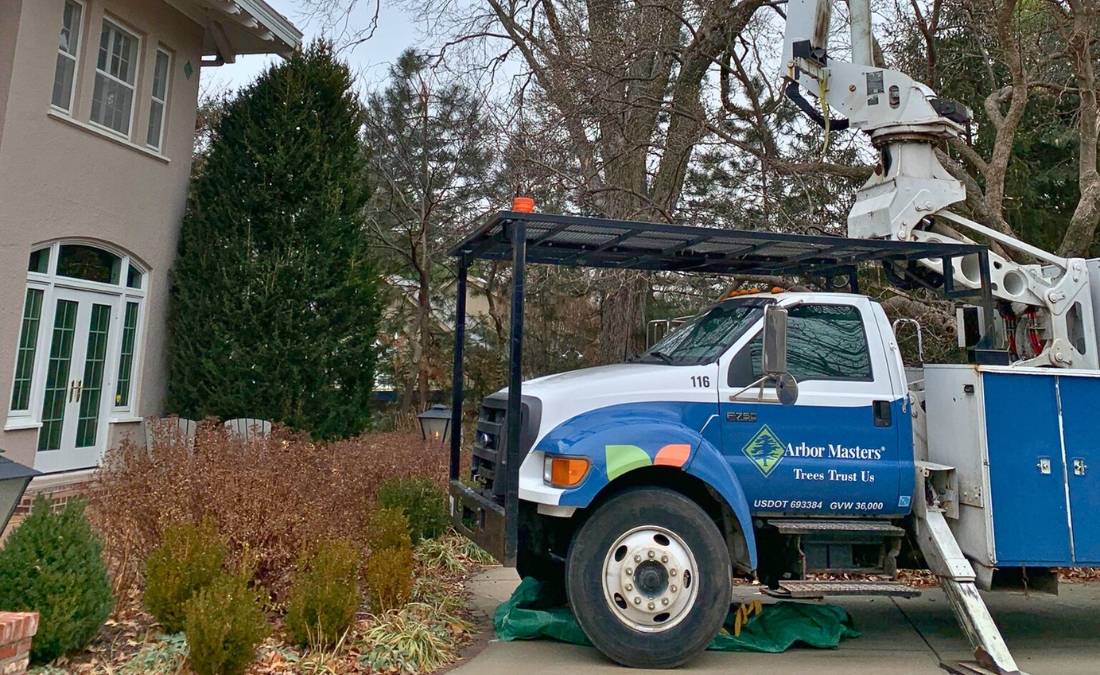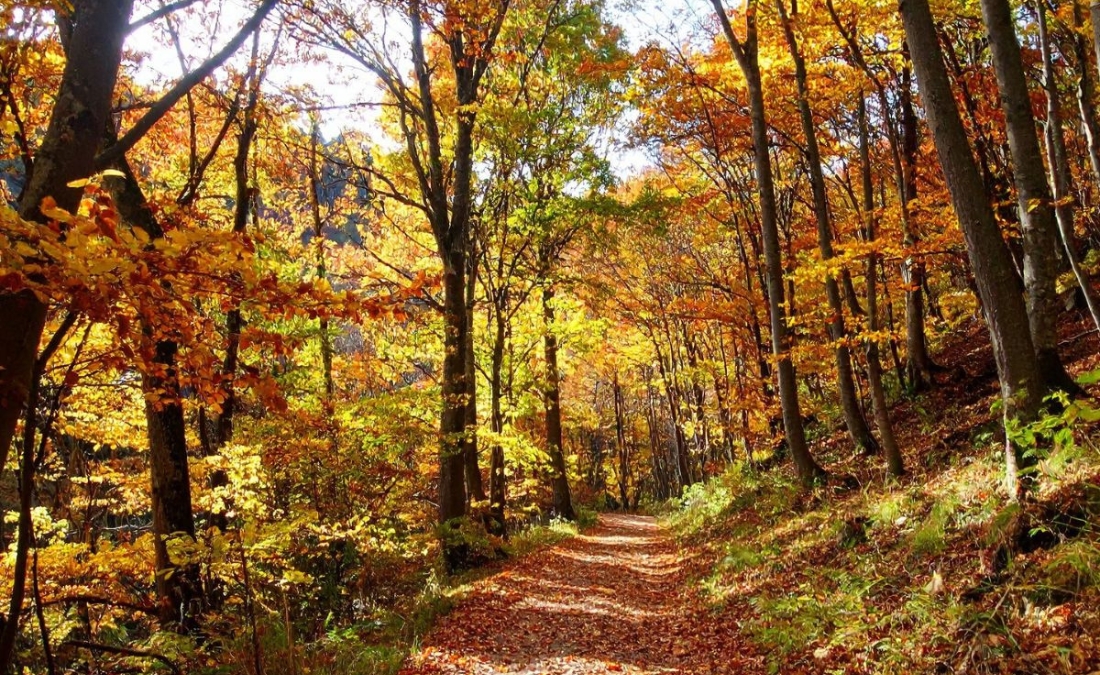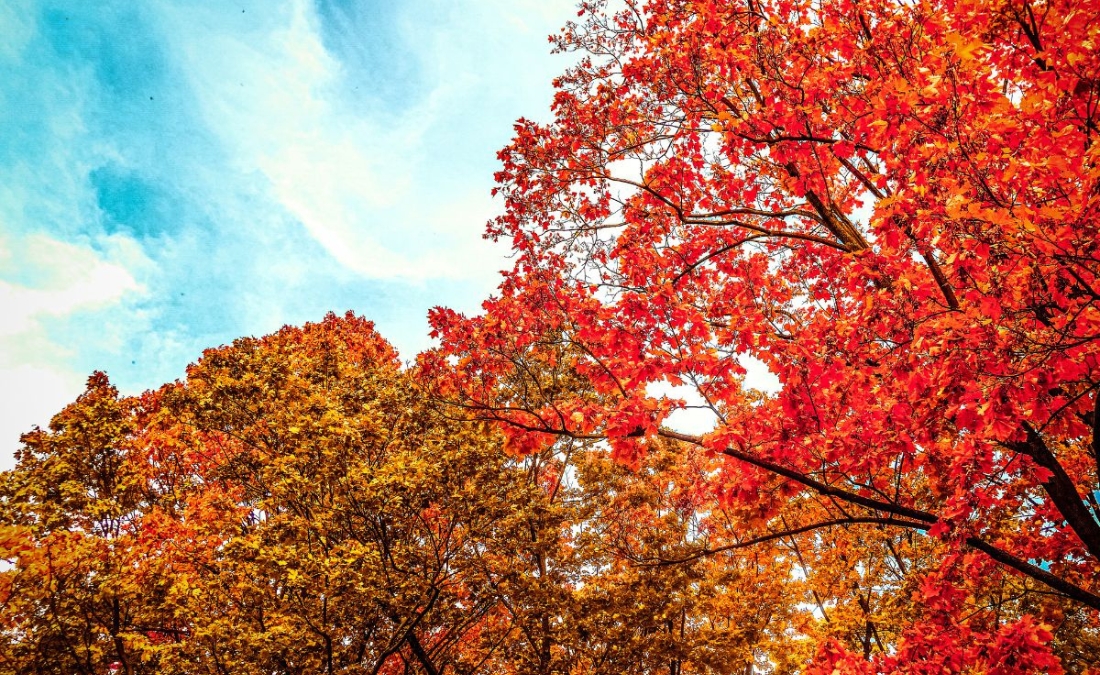Property Line Trees in Kansas City: Who’s Responsible for Care, Damage, and Permits?

Confused about property line trees in Kansas City? Learn who’s responsible for trimming, damage, and permits — and how to avoid costly neighbor disputes.
A storm-damaged tree limb crashes into your neighbor’s fence – and suddenly you’re facing questions about liability, permits, and who pays for what. Property line tree responsibility in Kansas City involves navigating state law, local municipal codes, and insurance requirements.
Whether you’re dealing with overhanging branches, shared boundary trees, or storm damage affecting both properties, these disputes are among the most common and stressful issues homeowners face. You’ll learn exactly what you can do yourself, when permits are required, and when to call in professional help.
Key Takeaways
- Tree ownership in Kansas is determined by trunk location, meaning that trees straddling property lines are considered “boundary trees” and require mutual consent for removal.
- You can trim branches overhanging your property without permission, but you cannot trespass or damage the tree.
- Johnson County cities have different permit requirements for tree removal, making it important to check your area before scheduling any services.
- Healthy tree failures in storms typically don’t create liability, but you may be liable if the tree showed visible hazards beforehand.
- Documentation is critical and proof of services, like professional arborist assessments, protect you legally and strengthen insurance claims.
- Dead or hazardous trees may create liability if you knew or should have known about the condition and failed to act before a tree failure event.

What Are the Property Line Tree Laws in Kansas?
Kansas common law principles govern property line tree issues, giving you specific rights and responsibilities. Understanding ownership rules, trimming rights, legal nuisances, and liability standards helps you navigate these situations confidently.
Who Owns a Tree on the Property Line in Kansas?
Kansas common law determines tree ownership by trunk location. If the trunk sits entirely on your property, you own it. If it’s entirely on your neighbor’s property, they own it.
But if the trunk straddles the property line, both neighbors share ownership. This is called a “boundary tree,” and both property owners must consent to removal and share costs.
Can You Trim Branches Hanging Over Your Property Line in Kansas?
Yes; Kansas law allows you to trim branches and roots extending onto your property up to the property line without permission. However, you cannot trespass onto your neighbor’s property or kill the tree through trimming.
That’s why it’s always important to work with a tree service company. Professional trimming helps you exercise your rights without risking tree damage or liability.
What Makes a Tree a Legal Nuisance in Kansas?
In Kansas, a tree becomes a legal nuisance when overhanging branches cause substantial harm or create imminent danger. Aesthetic complaints, such as blocked views, falling leaves, or shade, typically don’t qualify.
The case Pierce v. Casady set the precedent for these such disputes and established that trees threatening neighboring property can constitute nuisances.
If a tree qualifies as a nuisance, a few things can happen:
- The affected landowner may compel the owner to address it
- The tree owner may seek damages through legal action
- Tree Risk Assessment Qualified (TRAQ) arborists can document hazardous conditions for disputes

Are You Liable When Your Tree Damages a Neighbor’s Property in Kansas?
Property owners must maintain trees to prevent foreseeable hazards, but Kansas applies a “negligence standard.” This means you’re only liable if you knew or should have known about a dangerous tree condition and failed to address it.
So, if a healthy tree falls during a storm, it’s usually considered a natural disaster, and the tree owner is not held responsible for any damage to neighboring properties. However, if the damage-causing tree showed any visible hazards before the incident, there is a high chance you’d be liable. It all comes down to whether you knew if the tree in question was in a dangerous condition before the storm occurred.
These types of situations illustrate the importance of working with a team of tree professionals and staying on top of your tree care. Regular arborist inspections create documentation that protects against negligence claims.
H2: What Permits Are Required to Remove Trees in Johnson County Kansas?
Each Johnson County city has its own tree protection ordinance. Permit requirements vary by tree size (diameter at breast height/DBH), location, tree condition, and whether removal relates to construction.
Johnson County City-Specific Permit Requirements
Johnson County has over a dozen municipalities, each with its own tree removal permit requirements. Here are some of the major cities and their regulations:
| City | Key Requirements | Notes |
|---|---|---|
| Overland Park | City Forester authorization required for right-of-way trees. Maintain 12.5 ft clearances over streets, 8 ft over sidewalks. | Strict private property ordinances apply. More info |
| Shawnee | Right-of-Way Permits required for street trees. Trees 6″+ DBH on private property reportedly require permits – check before booking work. | Verify requirements before removal. More info |
| Leawood | Strict heritage tree protection, especially for historic properties with mature landscapes. | Among the most stringent tree preservation requirements in Johnson County. More info |
| Olathe | Development-related preservation requirements | Contact Planning Department for specific requirements |
| Prairie Village | Permits required for trees as small as 3″ DBH. Removal of large trees (20″+ and 30″+ DBH depending on location) prohibited except when dead, diseased, or threatening safety. | Strictest requirements in Johnson County under 2021 ordinance. More info |
Common patterns across Johnson County:
- Larger trees receive stricter protection
- Right-of-way trees are highly regulated
- Construction triggers additional requirements
- Dead or visibly dangerous trees are typically exempt from standard permit requirements.
Always verify current requirements with your city or consult a Certified Arborist familiar with local codes.
What Are Common Property Line Tree Problems and Solutions?
Property line tree conflicts typically fall into three categories: hazardous trees, storm damage, and neighbor disputes. Each requires a different approach based on the tree’s condition and your legal position.
What Should You Do About a Hazardous Tree on a Property Line?
When a dead, dying, or structurally compromised tree threatens both properties, responsibility depends on location:
- Your property = your responsibility
- Neighbor’s property creating nuisance = you may compel action
- Boundary trees = shared responsibility
Take these steps:
- Document the hazard with dated photos
- Get a Certified Arborist assessment to create a legal record
- Communicate your concerns to your neighbor in writing
- Consult an attorney if there’s no response and the danger is imminent
- Check if hazard status expedites permit requirements with your city
How Do You Handle Storm Damage That Affects Multiple Properties?
When storms cause tree damage affecting both properties, Kansas law typically protects you from liability if the tree was healthy and each property owner’s insurance covers damage to their own property. However, if the tree showed visible hazards before the storm, the tree owner may be held liable.
Immediate steps to take:
- Document damage immediately with photos and videos
- Make only temporary repairs to prevent further damage (save all receipts)
- Contact your insurance company promptly
- Provide documentation of the tree’s condition before the storm if available
Note: Emergency removal is often permit-exempt, but verify with your city before scheduling any services.
How Do You Resolve Property Line Tree Disputes With Neighbors?
Disagreements often involve overhanging branches, roof damage, or removal decisions. And though you can trim to the property line without permission, you cannot trespass or otherwise harm the tree.
Best practices for resolution:
- Communicate first – discuss concerns before taking action
- Document everything with photos, letters, and maintenance records
- Get a professional arborist assessment for neutral evaluation
- Consider mediation (often cheaper and faster than legal action)
- Create written agreements for boundary trees documenting cost-sharing and maintenance plans
- Check HOA rules for additional requirements
Most disputes resolve without legal action when approached professionally.
How Can Certified Arborists Help With Property Line Tree Issues?
Certified Arborists provide professional assessments and written reports that serve as evidence in disputes and insurance claims. They can establish whether trees constitute legal nuisances, identify hazards before problems occur, and offer professional TRAQ evaluations for formal documentation.
They also understand Johnson County permit requirements across all cities, determine if permits are needed for your situation, assist with applications, and know which trees qualify for exemptions.
When to call a Certified Arborist:
- Large trees near property lines or structures
- Trees showing disease or structural issues
- Before removing trees that may require permits
- Boundary trees straddling property lines
- When neighbor disputes arise
- Before/after major storms for documentation
- When preparing insurance claims
- During construction projects near trees
Look for ISA Certified Arborist credentials, TRAQ certification, familiarity with Johnson County requirements, and proper licensing.
Frequently Asked Questions About Property Line Tree Responsibility in Kansas City
How do I prove a tree was healthy before a storm for insurance purposes?
The best proof is a written tree assessment from a Certified Arborist conducted within 1-2 years before the storm. Without this, provide photos showing tree condition, maintenance records, or tree care service receipts.
What happens if my neighbor removes a boundary tree without my permission?
Since both owners share legal ownership of boundary trees, unauthorized removal may constitute property damage. You may seek compensation for your share of the tree’s value. Consult an attorney to understand your full rights.
If tree roots from my property damage my neighbor’s driveway, am I automatically liable?
Not automatically. Liability depends on whether you knew about the root problem and failed to address it. Gradual root damage is often considered natural rather than negligence.
Do tree preservation rules apply differently to new construction vs. existing homes?
Yes. Most Johnson County cities have stricter requirements during construction, often requiring tree protection plans, protective fencing, and replacement planting. Existing homes have more flexibility, but large or heritage trees often require permits regardless.

For Help Navigating Property Line Tree Responsibilities in Kansas City, Trust Arbor Masters
When that storm-damaged limb crashes into your neighbor’s fence, you now know exactly where to turn. Property line tree responsibility in Kansas City comes down to understanding three key elements: the common law principles that determine ownership and liability, Johnson County permit requirements that vary significantly by city, and the critical importance of professional documentation.
Dealing with a property line tree issue in Johnson County? Don’t let it escalate. Call Arbor Masters’ Certified Arborists at 913-441-8888 or request a professional assessment online to protect your property and give you peace of mind.

Get the latest local news, tree care tips, special offers, and company updates directly to your inbox! It's easy to subscribe and there's no spam - we promise.
"*" indicates required fields




